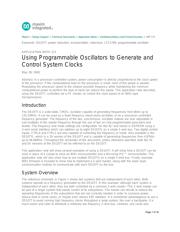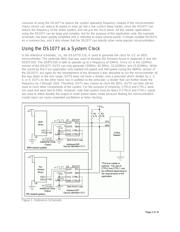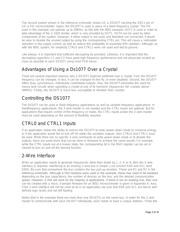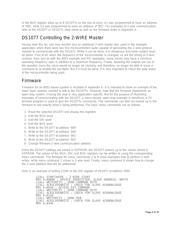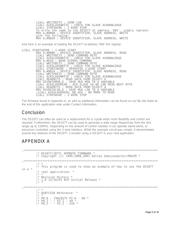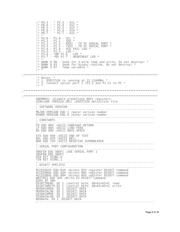Datasheet 搜索 > 时钟信号器件 > Maxim Integrated(美信) > DS1077LU-40+ 数据手册 > DS1077LU-40+ 用户编程技术手册 1/16 页
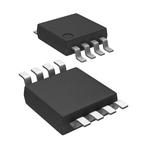
 器件3D模型
器件3D模型¥ 24.171
DS1077LU-40+ 用户编程技术手册 - Maxim Integrated(美信)
制造商:
Maxim Integrated(美信)
分类:
时钟信号器件
封装:
uMAX-8
Pictures:
3D模型
符号图
焊盘图
引脚图
产品图
页面导航:
原理图在P2
导航目录
DS1077LU-40+数据手册
Page:
of 16 Go
若手册格式错乱,请下载阅览PDF原文件

Maxim > Design Support > Technical Documents > Application Notes > Oscillators/Delay Lines/Timers/Counters > APP 171
Keywords: DS1077, power reduction, econoscillator, roboclock, LTC1799, programmable oscillator
APPLICATION NOTE 171
Using Programmable Oscillators to Generate and
Control System Clocks
May 28, 2002
Abstract: In a processor-controlled system, power consumption is directly proportional to the clock speed
of the processor. If the computational load on the processor is small, most of this power is wasted.
Modulating the processor speed to the slowest possible frequency while maintaining the minimum
computational power to perform the task at hand can reduce this waste. This application note describes
using the DS1077, controlled via a PC master, to control the clock speed of an 8051-type
microprocessor.
Introduction
The DS1077 is a solid-state, CMOS, oscillator capable of generating frequencies from 8kHz up to
133.33MHz. It can be used as a fixed frequency stand-alone oscillator, or as a processor-controlled
frequency generator. The frequency of the two, synchronous, oscillator outputs are user adjustable in
sub-multiples of the master frequency through the use of two on-chip programmable prescalers and
divider. The frequency and mode settings are configurable "on-the-fly" and stored in EEPROM using a
2-wire serial interface which can address up to eight DS1077s on a single 2-wire bus. Two digital control
inputs, CTRL0 and CTRL1 are also capable of controlling the frequency or mode. Also available is the
DS1077L, which is a 3V version of the DS1077 and is capable of generating frequencies from 4.87kHz
up to 66.66MHz. Throughout the remainder of this document, unless otherwise specified, both the 3V
and 5V versions of the DS1077 will be referred to as the DS1077.
This application note will show several examples of using a DS1077. It will show how a DS1077 can be
used in place of a crystal to clock an 8051 microcontroller and a Microchip PIC™ microcontroller. This
application note will also show how to use multiple DS1077s on a single 2-wire bus. Finally, example
8051 firmware is included to show how to implement a 2-wire master, along with the lower layer
communication routines to communicate with each DS1077 on the bus.
System Overview
The reference schematic in Figure 1 shows two systems that are independent of each other. Both
systems operate at a frequency generated by the DS1077. In this example, although each system is
independent of each other, they are both controlled by a common 2-wire master. This 2-wire master can
be part of a larger system that needs control of its subsystems. The master can decide to reduce the
operating frequencies of the subsystems that are not currently needed in order to conserve power,
reduce heat in some cases, or maybe even reduce EMI radiation. It is sometimes advantageous to use a
DS1077 to avoid running high frequency clocks throughout a large system, like over a backplane. It is
much easier and safer to distribute a relatively low frequency 2-wire bus. Likewise, one could also
Page 1 of 16
器件 Datasheet 文档搜索
AiEMA 数据库涵盖高达 72,405,303 个元件的数据手册,每天更新 5,000 多个 PDF 文件
